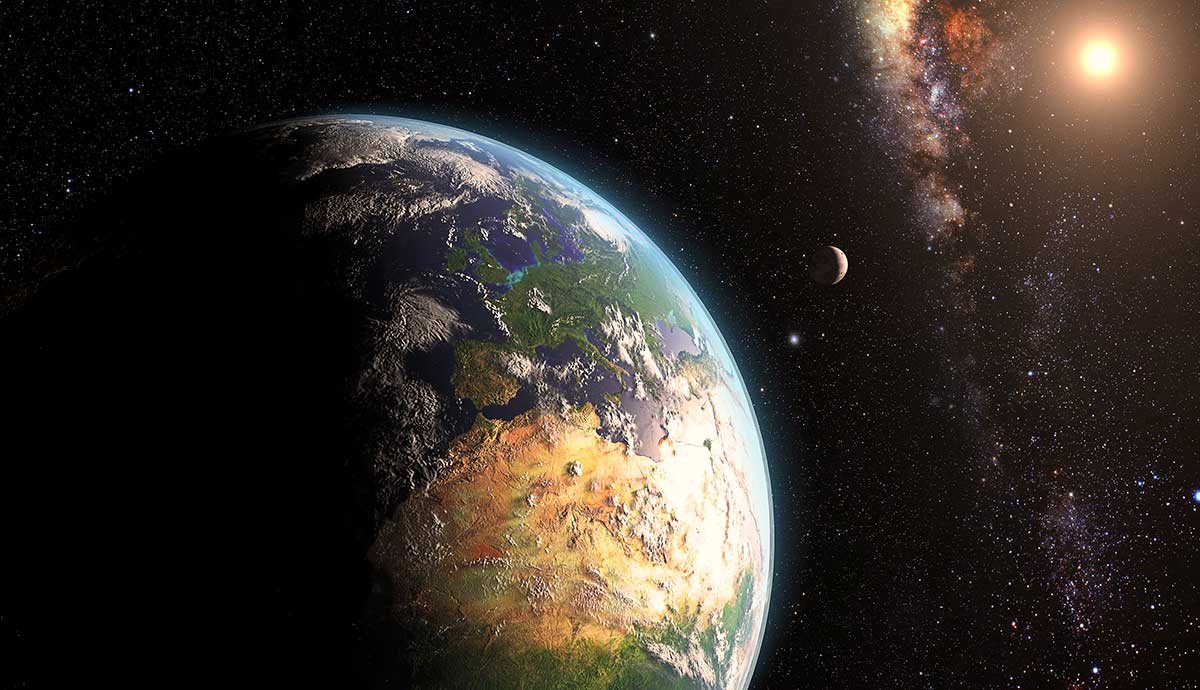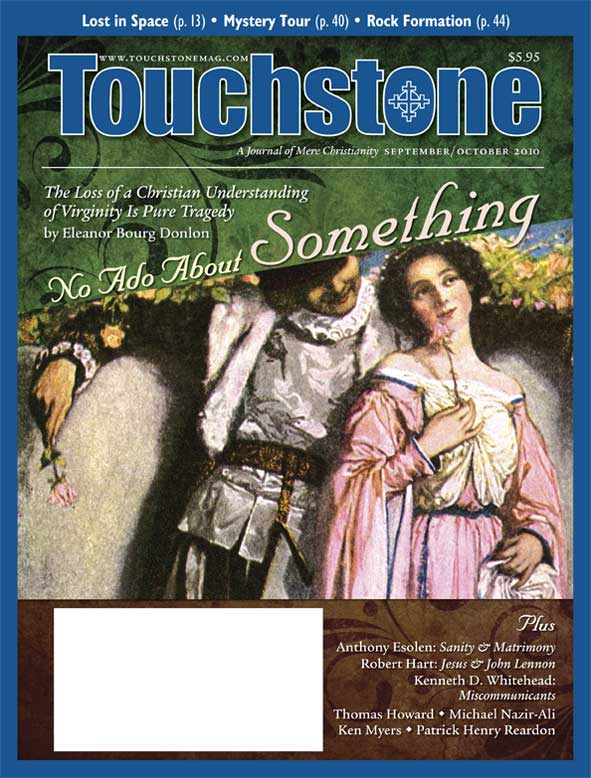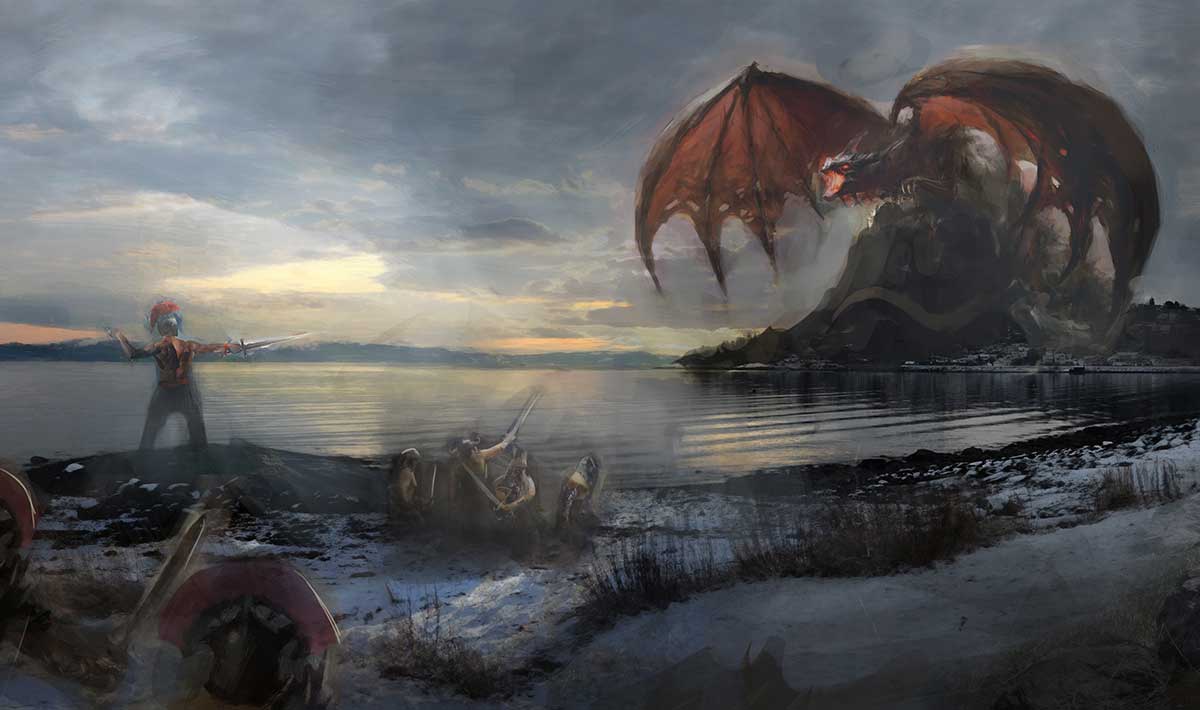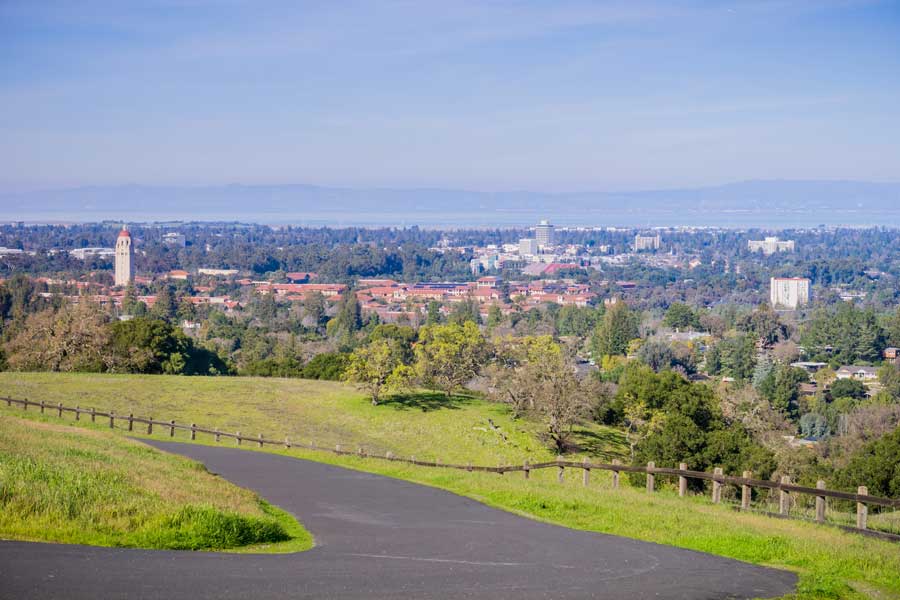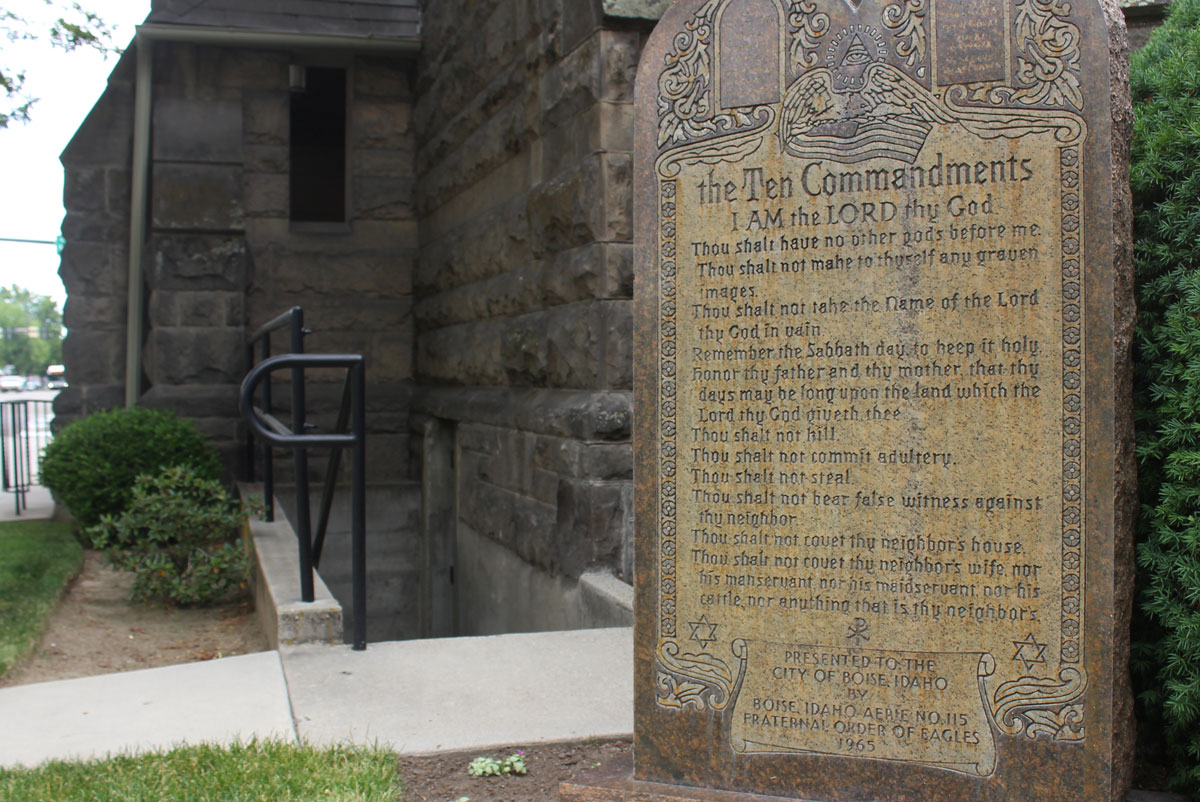View
Lost in Space
Michael Baruzzini on the Cosmic Home Carl Sagan Couldn’t See
C. S. Lewis, of The Chronicles of Narnia fame, penned another less familiar set of novels: his Space Trilogy. This set of three science-fiction adventures follows the travels and trials of an Oxford professor of philology named Elwin Ransom (rumored to be based on Lewis’s friend J. R. R. Tolkien, author of The Lord of the Rings). Ransom travels first to the planet Mars in Out of the Silent Planet, then to Venus in Perelandra, and finally, in That Hideous Strength, the last book of the series, he participates in a dramatic showdown on earth between the cosmic powers of good and evil.
Alongside his investigation of how orthodox Christian beliefs might play out in a “sci-fi” scenario, Lewis threw in speculations about the particulars of space travel and the nature of space itself. In one inspired passage, Ransom sits in his spacecraft on the way to Mars, and muses about how “space” has not been quite what he expected:
He had read of “Space”: at the back of his thinking for years had lurked the dismal fancy of the black, cold vacuity, the utter deadness, which was supposed to separate the worlds. He had not known how much it affected him till now—now that the very name “Space” seemed a blasphemous libel for this empyrean ocean of radiance in which they swam. He could not call it “dead”; he felt life pouring into him from it every moment. How indeed should it be otherwise, since out of this ocean the worlds and all their life had come? He had thought it was barren: he saw now that it was the womb of worlds, whose blazing and innumerable offspring looked down nightly even upon the earth with so many eyes—and here, with how many more? No: Space was the wrong name. Older thinkers had been wise when they named it simply the heavens—the heavens which declared the glory. . . .
Ransom discovers that space is not quite what the modern, scientific imagination envisions: vast, cold, and empty. His view accords more with the ancient conception of the universe, which envisioned the space around earth as a complicated and ethereal heaven, crowded and precise. In some cosmologies, crystal spheres contained the orbits of each of the planets, which were propelled by Pythagoras’s mystical, geometrical music.
Vaster & Emptier
As technology progressed and civilization developed the investigative tools and techniques of modern science, the limits of these intimate heavens were pushed back. Copernicus demonstrated that the sun was the dominant object in the local universe and that the earth simply circled it in a large, empty orbit, accompanied by the other planets. Later measurements showed that the stars were not small points of light settled just at the edge of the solar system but were actually millions of times farther away in space—and therefore must be unimaginably large and bright objects, possibly other suns. The cosmos was growing, and as it grew, it grew emptier.
Edwin Hubble and others showed that the Milky Way was not the only galaxy, but that the stars, with the vast spaces between them, were clustered into millions of relatively similar galaxies, with even grander empty spaces between those. Finally, the advent of space travel underscored the inhospitableness of space, where millions of dollars’ worth of state-of-the-art equipment was required to keep just a few astronauts alive for a short time. The cozy home of the gods was now known to be a barren wasteland, punctuated by isolated clumps of matter, one of which happened to be our lonely, insignificant oasis, the planet earth.
In 1990, the popularizer of science Carl Sagan asked NASA to point the cameras on the spacecraft Voyager at earth, in order to take a photograph of our planet from a distance of almost four billion miles. The resulting image is iconic, showing the earth as an insignificant speck in the midst of a sea of empty blackness. In stark contrast to Ransom’s sentiment, Sagan, a noted atheist, was inspired by this photo to pronounce in his book Pale Blue Dot:
Our posturings, our imagined self-importance, the delusion that we have some privileged position in the Universe, are challenged by this point of pale light. Our planet is a lonely speck in the great enveloping cosmic dark. In our obscurity, in all this vastness, there is no hint that help will come from elsewhere to save us from ourselves.
Full of Stuff
Where Lewis had Ransom find a life-giving environment, Sagan found affirmation of man’s essential loneliness. While Sagan’s picture of space focused on the vast distances and vacuity of the heavens, Lewis’s character, eschewing the nihilism of modern sentiment, focused on the connections between the planets and space.
Who was right? Is space really just a vast, empty void, as Sagan imagined? Or is the earth not rolling through emptiness, but floating in a cosmic sea of light and radiance, as Lewis envisioned?
It turns out that Lewis was largely right. While modern space travelers certainly do not find space quite the “life giving” environment he imagined, we do know now that space is full of “stuff”—it’s just not the kind of stuff that is readily detectible by human senses. And here is the catch: If we are sailing on a cosmic sea, we are (mostly) blind sailors; we cannot see much of the “empyrean ocean” around us with our naked eyes.
But modern scientific instruments have revealed what our eyes alone cannot see: a truly full and energetic cosmos around us. For example, when we turn our eyes heavenward on a clear night away from city lights, we see stars and the pale band of the Milky Way. It is a beautiful scene, no doubt, but the stars seem to be lonely pinpoints of light in a much larger expanse of dark emptiness. If, however, we use an instrument that can detect wavelengths other than those of visible light—say the COBE microwave telescope—we can see a glowing background of radiation left over from the early moments of the universe, the photons released when the universe first became open enough to allow light to flow unimpeded.
These microwave bands reveal that the universe is not empty, but is bathed everywhere with this background glow, the telltale remnant of the Big Bang, the moment of the modern universe’s creation.
Another example can be found in the aurora borealis, or northern lights. Visible at high latitudes, these ghostly curtains of light are evidence of a powerful stream of invisible particles coming from our own sun. These particles interact with our atmosphere, disrupt the earth’s magnetic field, and create spectacular light shows. Particularly large streams of these particles can even disrupt radio communications on the earth’s surface. Our planet does not barrel through emptiness; it plows through a solar particle field that has real effects on it.
Made of Star-Dust
Yet there’s something more to this discovery of the complex, dynamic nature of space. Not only is space full of energetic events, but those events are, in fact, responsible for the formation of our planet, our bodies, and even the continuation of life on earth. Lewis called space the “womb of worlds,” and indeed, modern science recognizes that it is in the life and death of stars that the elements that make up our planet, and even our human bodies, are formed.
Modern cosmology demonstrates that nuclear reactions in stars turn simple hydrogen into complex elements, and spew this matter into space to form new worlds. If it were not for the lives and explosive deaths of stars, there would be no planets, no place for us to live on.
Even more, all of the particles that make up our bodies and the familiar world around us are the products of reactions deep within stars. The same reactions that turn simple protons into the rocks and waters of planets also form the complex elements in living things, starting with the indispensable element carbon, which makes up the backbone of all organic molecules.
Without the astrophysical processes that power the stars, the very matter that makes up our bodies would not be here. Science writer Simon Singh points out that this means we are made of nuclear waste; Carl Sagan for once got it right, and poetically so, when he stated that this means we are made of star-dust. In either case, Lewis’s instinct is confirmed: Space is the womb of life; it creates the very matter from which life and its home on earth is made.
To take this intimate connection between our lives and space even further, we depend on stars to give us not only the matter that makes up our bodies, but the energy to run them as well. Energy from one particular star is crucial to our very ability to carry out our day-to-day activities. If it weren’t for the fusion reactions that transform protons into helium in the heart of our own star, the sun, I would not be able to write or you to read this sentence.
The sun produces energy in the form of heat and light; that light is then transformed into sugars by plants through photosynthesis. Animals, such as cows, eat those plants and thus absorb the energy the plants obtained from the sun. We eat that cow in our hamburgers at lunch, and thus have the energy with which to carry out the biochemical processes necessary to live. Ultimately, our bodies are both powered by and made of materials built in a star.
Meaningful Immensity
When modern science demonstrates that mankind is crucially dependent on the very events of the grand cosmos for his existence, the believer’s mind sees purpose and intention. Whereas our statistically insignificant size relative to the great reaches of space implies meaninglessness to the atheist, size has little meaning to the Christian. We believe, after all, in a God who is infinite.
From the readiness with which medieval Christianity accepted the nested order of the Aristotelian universe, to the progressive cosmic orders of Dante’s Divine Comedy, and even to J. R. R. Tolkien’s Middle-earth creation myth, which speaks of the habitation of man as nestled far within the “Deeps of Time,” the idea of a universe of meaningful immensity and density has been amenable to the Christian mind. Man finds himself not lost in the cold, but placed precisely in a life-giving realm, not too unlike a developing infant folded deep in the tissues of his mother, or a vibrant reef enveloped in the nourishing flows and currents of the ocean.
There is a cold and mechanical note to the vision of space as vast and empty; it is a picture that was popularized when Enlightenment deism was in vogue. In this view, the universe was little more than a wind-up toy, a piece of machinery that ran according to strict laws, and that was perhaps watched by God with all the detached bemusement of a country gentleman observing the grandfather clock in his parlor. Needless to say, this abstract God was soon discarded. In the words of the Marquis de Laplace to Napoleon, there was “no need for that hypothesis.”
Christianity proposes something different: a universe in which God has established the laws, and also in which he still plays a part, loving the little gods he has made to live in this landscape he has sculpted. Like the choreography of scene and actor in the best plays and ballets, man and his world go together on a living stage.
A barren cosmos is convenient for the atheist. Vast emptiness translates neatly into meaninglessness. On the other hand, a conception of the universe as a full and life-giving place implies purpose.
Womb of Worlds
Of course, none of this is scientific in the very strictest sense. The skeptic will simply respond that if things were otherwise, we wouldn’t be here to know it. Yet, when the atheist enlists the facts of man’s tininess and space’s bleak barrenness as the inspiration for his nihilism, the Christian would do well to recall Chesterton’s observation that man’s greatest lapse is in forgetting that he is living on a star, and therefore to point to the stars as an integral and purposeful part of his being.
The universe is not an empty stage that exists merely to give man room for moving about. To borrow an image from Benjamin Wiker, a flower is a relatively massive and complex structure organized towards the production of a seed; might it not also be the case that the universe, as Lewis said, is the “womb of worlds,” a grand and complicated organ for the production of human life?
subscription options
Order
Print/Online Subscription

Get six issues (one year) of Touchstone PLUS full online access including pdf downloads for only $39.95. That's only $3.34 per month!
Order
Online Only
Subscription

Get a one-year full-access subscription to the Touchstone online archives for only $19.95. That's only $1.66 per month!
bulk subscriptions
Order Touchstone subscriptions in bulk and save $10 per sub! Each subscription includes 6 issues of Touchstone plus full online access to touchstonemag.com—including archives, videos, and pdf downloads of recent issues for only $29.95 each! Great for churches or study groups.
Transactions will be processed on a secure server.
more on C. S. Lewis from the online archives
more from the online archives
calling all readers
Please Donate
"There are magazines worth reading but few worth saving . . . Touchstone is just such a magazine."
—Alice von Hildebrand
"Here we do not concede one square millimeter of territory to falsehood, folly, contemporary sentimentality, or fashion. We speak the truth, and let God be our judge. . . . Touchstone is the one committedly Christian conservative journal."
—Anthony Esolen, Touchstone senior editor





